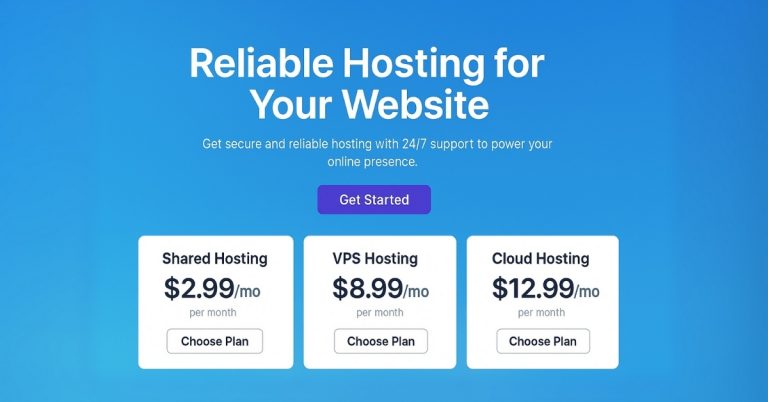Full Site Editing: Revolutionizing WordPress with Version 5.8
Full Site Editing: Revolutionizing WordPress with Version 5.8
WordPress has long been a powerful tool for web development, enabling creators to build anything from simple blogs to complex websites. However, for beginners and casual users, mastering WordPress has often felt overwhelming. With the release of WordPress 5.8 on July 20, things are about to change—drastically. The introduction of Full Site Editing (FSE) is poised to make WordPress more accessible, efficient, and user-friendly than ever before.
In this article, we’ll break down what Full Site Editing is, how it benefits users, and why it’s a game-changer for both developers and designers.
What Is Full Site Editing?
To understand Full Site Editing, we need a brief history lesson. A few years ago, WordPress revolutionized its editing process with the introduction of the Gutenberg block editor. This replaced the traditional TinyMCE editor, transforming WordPress from a basic text-based editor into a modular block-based system.
Blocks allowed users to insert and customize elements like text, images, videos, galleries, and more, all without touching a single line of code. While this improved the post and page editing experience, it left one crucial aspect untouched: the rest of the website.
Enter Full Site Editing. FSE takes the block concept further, enabling users to customize not just posts and pages but entire websites—from headers and footers to templates and global styles—using the same block-based interface. In essence, FSE democratizes design, making advanced customization accessible to everyone.
Why Full Site Editing Matters
1. For Beginners and Casual Users
Historically, WordPress has been criticized for its steep learning curve. FSE addresses this by simplifying the design process. With drag-and-drop blocks, users can.
- Customize headers, footers, and sidebars without coding.
- Modify layouts and global styles with ease.
- Create a cohesive look across their site, all from a unified interface.
If you’re a casual user who prefers installing a theme and making minimal tweaks, FSE won’t disrupt your workflow. You can continue using WordPress as you always have. However, for those eager to explore deeper customizations, FSE offers a whole new world of possibilities.
2. For Power Users
Power users—those who want total control over their site’s design but lack coding expertise—stand to gain the most from FSE. Tasks that previously required advanced skills, such as editing PHP templates or CSS files, can now be done visually through the block editor. This reduces dependency on third-party tools like page builders and empowers users to bring their visions to life.
What Full Site Editing Means for Developers and Designers
The introduction of FSE marks a paradigm shift for WordPress themes and development practices:
i) End of Single-Purpose Themes
Traditional themes designed for specific layouts or functionalities are becoming obsolete. FSE-compatible themes are more flexible, focusing on providing a framework for users to build their unique designs.
ii) New Development Standards
Developers will need to adapt to creating themes that leverage JSON configuration files and CSS for customization. This reduces the reliance on PHP templates and increases modularity.
iii) Opportunities and Challenges
While FSE presents exciting possibilities, it also introduces challenges. Not all themes are FSE-ready, requiring additional development work. Yet, embracing FSE early positions developers to stay ahead in a rapidly evolving ecosystem.
Hardeep Asrani, a WordPress contributor, summarizes it best: “With FSE, WordPress becomes truly WYSIWYG. Developers can provide users with better solutions without requiring them to learn complex coding languages like CSS or PHP.”
How to Enable Full Site Editing
To start using Full Site Editing, you’ll need three key components:
- WordPress 5.8: Ensure your WordPress installation is updated to the latest version.
- Gutenberg Plugin: This standalone plugin includes cutting-edge features of the block editor, including FSE.
- An FSE-Compatible Theme: Not all themes support FSE yet. A great starting point is the official TT1 Blocks theme by WordPress.
Once these are in place, navigate to the Site Editor via your WordPress dashboard. Here, you can begin experimenting with blocks for headers, footers, templates, and more. It’s as simple as dragging and dropping elements to customize your site’s structure and design.
What’s Next for WordPress?
The introduction of Full Site Editing is a pivotal moment for WordPress. By making advanced customization more accessible, it positions WordPress as a formidable alternative to platforms like Wix and Squarespace, especially for DIY users and small businesses.
As FSE continues to evolve, we can expect even greater flexibility, more compatible themes, and enhanced tools for both casual users and professionals.
Final Thoughts
WordPress 5.8 and Full Site Editing are not just updates—they’re a redefinition of what’s possible with the world’s most popular content management system. Whether you’re a beginner, a power user, or a seasoned developer, FSE offers something for everyone. It simplifies workflows, enhances customization, and future-proofs WordPress for years to come.
Ready to take your website to the next level? Dive into Full Site Editing and explore the limitless possibilities it brings to your fingertips!







